Text

Nevermind...
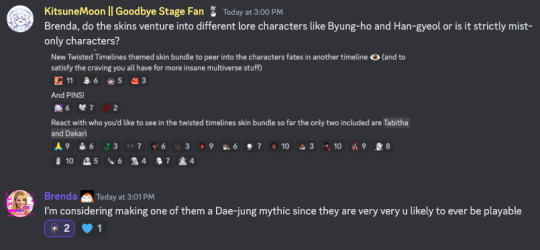
BABE WAKE UP BYUNG OR HAN IS GOING INTO THE MIST!!!
4 notes
·
View notes
Text
I'm watching Amon's side story in Lullaby of Demonia and why tf is the MC just sucking ass rn. Like "I wonder if he can still get redeemed?" Girl, he literally SAed you. Not to mention, he killed thousands of other innocent people, including his dad.
And look, I know Lucifer is far from being the best father as they discussed a tad bit of Lucifer's favouritism with Alastor because he was spurred out of Lucifer's one and true love, Rosaria, and the rest of his wives are just ignored. But like, the rest of his brothers turned out fine despite having gone through the same conditions (relatively, Valec did still bad shit but did turn away from it and Ifrit just constantly slept with succubi and drank all day before meeting MC). I doubt it's solely Luci's fault and Amon's personality is still bad, especially considering the other brothers still find him killing Luci just straight-up revolting and they still respect their dad. I think Lucifer would've just had favouritism and negligence (more or less) to any child who wasn't Alastor which I doubt is enough to do what Amon did.
Your other brothers went through the same shit you did, stop trying to pin the blame on your father for your bad behaviour when you could've used your brothers to actually console each other and have a group that completely understands your situation and use that as a support group. You're literally the third-born, you definitely had Malthus to talk to.
"I don't need another speech by some impotent whack job whose mother didn't love him, rationalizing why he needs to conquer the universe!" — Peter Quill/Star-Lord
0 notes
Text
Ngl, I thought the falling stars lyric was a reference to how Round 3 has the motif of falling stars (the shots of falling stars in Ivan's eyes, falling stars in the background on the stage Ivan is singing on, the meteor shower scene and how falling stars are just meteorites, when child Till is standing up against the alien and falling stars flash as he does, etc.).
not actually a theme I think but I find it interesting how in the lyrics of CURE Till talks about crying(?) but uses stars instead of tears,

and one of Ivan's lines when he starts singing is "carve scars beneath my eyes"

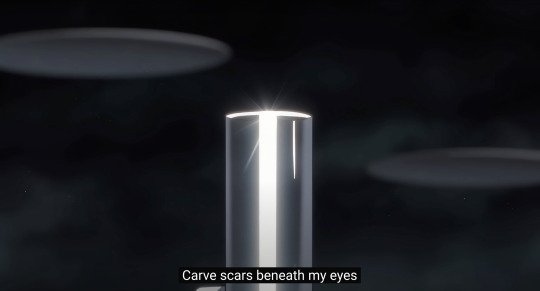
which is a way of saying that even if Till made him cry so much that he literally got hurt from it, that he'd continue suffering through it for Till....like...which is kinda star tear disease coded? Oh and the fact that they're both pining over people who don't want them....and that they're willingly blind to the fact because they do not want to let go of that person...goodbye.

74 notes
·
View notes
Text
everyone's doomed
also on youtube
youtube
273 notes
·
View notes
Text

BABE WAKE UP BYUNG OR HAN IS GOING INTO THE MIST!!!
#daybreak roblox#roblox daybreak#YESSSSS YES YES YES#OMG OMG OHHHH MAAAAAA GOOOOOOODDDDD#NONE OF YOU UNDERSTAND HOW MUCH I WANT THEM IN#I SO DO NOT REGRET BUYING A $25 DOLLAR GIFTCARD FOR ROBUX MY MONEY WILL BE USED WELL#I CAN'T BELIEVE MY DREAMS COME TRUE#YESSSSSSSSSSSSSSS#AM I DREAMING RIGHT NOW#EDWHEBHWFBHWEFBWEKBFWEF#I CAN DIE HAPPY ONCE I'VE BOUGHT THE SKIN#BRENDA I LOVE YOU SO MUCH GIRL#<3 <3 <3 <3 <3#AFTER ALL THESE YEARS OF LONGING FOR THEM NOW I HAVE THEM#YESSSSSSSSSSSSSSSS#THANK GOD FOR THIS BEAUTIFUL DAY#ok i'm fine now#can't wait for the new update#we get stareater and goodbye stage skins both for ye-jun and either byung or han
4 notes
·
View notes
Text
Yeah fr, I watched girlie's Suki Suki Daisuki video constantly and ventured their other vids before Alien Stage ever dropped.
Once I did get into Alien Stage, I didn't realise they were the one who made the series because I never would've imagined a animator YouTuber would've made a series that popular with their own custom songs. But honestly I'm glad for her. CG Vivi.
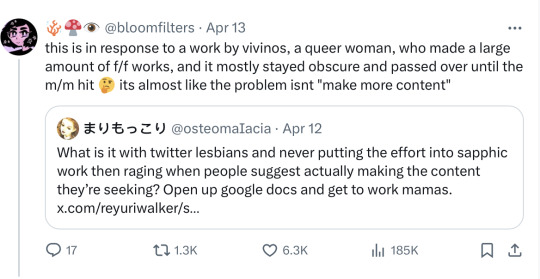
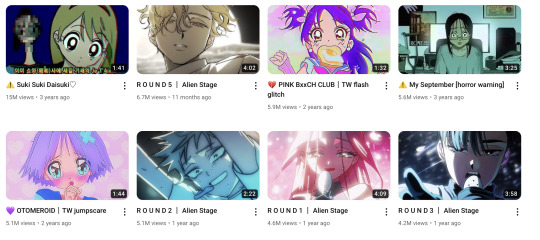
I keep seeing people saying vivinos was “obscure” before the newest alien stage video. like am I crazy her vids are extremely popular and always have been. literally all of her full length videos have over 1 million views each, how is this obscure at all? the extremely short onigiri dance video alone has over 6 million. most independent animators and directors would kill to be “passed over” like this.
37 notes
·
View notes
Text
I'm sorry I'm not kept up with the fellow users of Tumblr but WHAT IS IVANTILL
Can my followers pls tell me?
0 notes
Text
what do you do when you find a cute boy?
you make him worse!
made some milo fanart from the raise your own yandere game by @perfectlovevn
go play the game here!

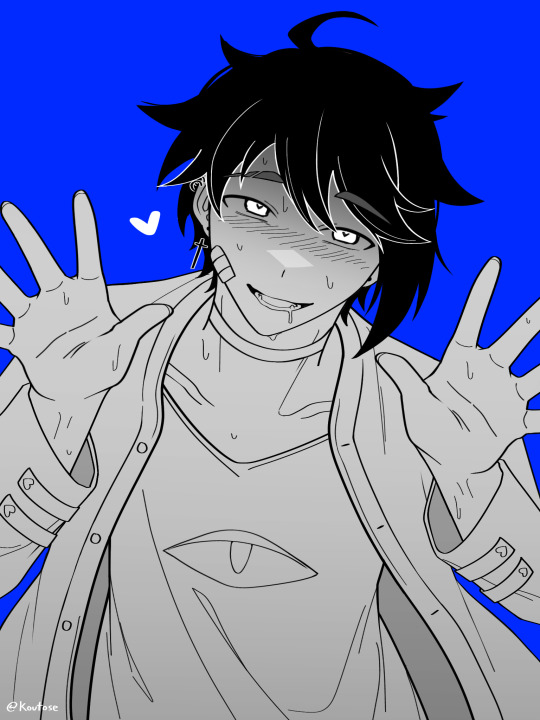

486 notes
·
View notes
Text
PLEASE FOR THE LOVE OF GOD PLAY THIS GAME IF YOU HAVEN'T YET!
I usually don't like Yandere VNs unless I want to play a horror game (because I have a strong belief in a free, healthy, "if you love them then let them go" love so playing a Yandere VN makes me feel more scared since the yandere tend to be the LIs and technically the LI is one here but it's more nuanced than that). But my god does this game just execute the trope perfectly in a very niche way.
One of my biggest gripes about Yandere VNs is how the MC (and the game itself) always romanticises the actions of the Yandere which always creates personal dissonance. But here, it's a tool that only elevates the storytelling. Eris is not a good person and the narrative makes this clear and you're meant to feel uneasy about how they manipulate Milo to change into what they want him to be.
And my god it personally hurt for me to see Milo change who he was for Eris and see Eris as his world because those changes did benefit him at the expense of losing his morality and sanity. Seeing how Eris just changing him into someone worse was more horror-inducing than any jumpscare I've experienced, especially because I liked shy and meek Milo from the get-go.
I don't wanna spoil too much but please just take the time to complete this game. It's completely worth the time and money (if you wish).
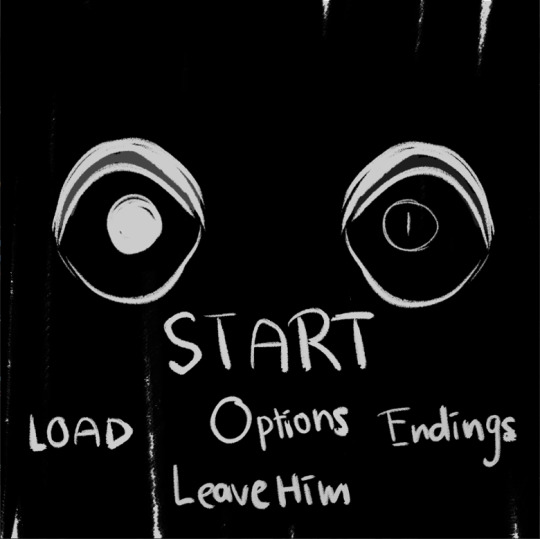
Ready to Meet Milo?
Game is now uploaded. Go nuts! Let me know if there are any bugs.
Here is the walkthrough if you need it.
217 notes
·
View notes
Text
My hc / interpretation of the 4l LIs… ^_^

Individual images (w/o filters)





#Not me deadass seeing the bottom left one and immediately thinking that was Ye-jun#I'M NOT WRONG RIGHT
605 notes
·
View notes
Text
PSA: bot comments are taking over ao3



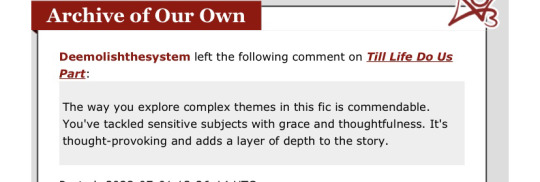

The above examples have been provided with the authors' permission to demonstrate what these look like.
Basic rundown:
They are all 3 sentences long
Perfect grammar, capitalization, and punctuation
Like absolutely flawless English teacher-style writing with only a single exclamation mark, ever
No mentions whatsoever of character names, settings, situations, or anything that could be tied to the story
The usernames may be identical to people who exist on ao3, but the name is not clickable, and no profile is associated with it EXCEPT when you directly search for that name. What this means: the comments come from an unregistered (not logged in) reader, bots scrape the site for real usernames, attach that to the comment, and post
Please spread the word about this so authors can filter comments and report them accordingly
There has been some speculation about why this is happening at all, and the best guess is that this is a feature that AI-training story-scraping tools are implementing to try and make their browsing traffic look legitimate
55K notes
·
View notes
Text
I submitted my demo to the yandere game jams!
This has been super fun to work on. Actually putting your work out there is a little nerve wracking lol, but I hope to improve a lot as I keep enjoying this new hobby! Thank you again to anyone who’s taken an interest in my project and sent in cute and fun asks, it’s meant a lot to me. I’m opening my askbox again now that this is out too!
Here’s the link to it
646 notes
·
View notes
Text
NAH I THOUGHT THIS WAS SOME SORT OF SHITTY YOU SKIN WTF IS THIS
I’m sorry but this new Callum drip is so ass ☠️

HE’S SO UFLY
4 notes
·
View notes
Text
Writing Tips
Punctuating Dialogue
✧
➸ “This is a sentence.”
➸ “This is a sentence with a dialogue tag at the end,” she said.
➸ “This,” he said, “is a sentence split by a dialogue tag.”
➸ “This is a sentence,” she said. “This is a new sentence. New sentences are capitalized.”
➸ “This is a sentence followed by an action.” He stood. “They are separate sentences because he did not speak by standing.”
➸ She said, “Use a comma to introduce dialogue. The quote is capitalized when the dialogue tag is at the beginning.”
➸ “Use a comma when a dialogue tag follows a quote,” he said.
“Unless there is a question mark?” she asked.
“Or an exclamation point!” he answered. “The dialogue tag still remains uncapitalized because it’s not truly the end of the sentence.”
➸ “Periods and commas should be inside closing quotations.”
➸ “Hey!” she shouted, “Sometimes exclamation points are inside quotations.”
However, if it’s not dialogue exclamation points can also be “outside”!
➸ “Does this apply to question marks too?” he asked.
If it’s not dialogue, can question marks be “outside”? (Yes, they can.)
➸ “This applies to dashes too. Inside quotations dashes typically express—“
“Interruption” — but there are situations dashes may be outside.
➸ “You’ll notice that exclamation marks, question marks, and dashes do not have a comma after them. Ellipses don’t have a comma after them either…” she said.
➸ “My teacher said, ‘Use single quotation marks when quoting within dialogue.’”
➸ “Use paragraph breaks to indicate a new speaker,” he said.
“The readers will know it’s someone else speaking.”
➸ “If it’s the same speaker but different paragraph, keep the closing quotation off.
“This shows it’s the same character continuing to speak.”
76K notes
·
View notes
Text
Writing Tips
Punctuating Dialogue
✧
➸ “This is a sentence.”
➸ “This is a sentence with a dialogue tag at the end,” she said.
➸ “This,” he said, “is a sentence split by a dialogue tag.”
➸ “This is a sentence,” she said. “This is a new sentence. New sentences are capitalized.”
➸ “This is a sentence followed by an action.” He stood. “They are separate sentences because he did not speak by standing.”
➸ She said, “Use a comma to introduce dialogue. The quote is capitalized when the dialogue tag is at the beginning.”
➸ “Use a comma when a dialogue tag follows a quote,” he said.
“Unless there is a question mark?” she asked.
“Or an exclamation point!” he answered. “The dialogue tag still remains uncapitalized because it’s not truly the end of the sentence.”
➸ “Periods and commas should be inside closing quotations.”
➸ “Hey!” she shouted, “Sometimes exclamation points are inside quotations.”
However, if it’s not dialogue exclamation points can also be “outside”!
➸ “Does this apply to question marks too?” he asked.
If it’s not dialogue, can question marks be “outside”? (Yes, they can.)
➸ “This applies to dashes too. Inside quotations dashes typically express—“
“Interruption” — but there are situations dashes may be outside.
➸ “You’ll notice that exclamation marks, question marks, and dashes do not have a comma after them. Ellipses don’t have a comma after them either…” she said.
➸ “My teacher said, ‘Use single quotation marks when quoting within dialogue.’”
➸ “Use paragraph breaks to indicate a new speaker,” he said.
“The readers will know it���s someone else speaking.”
➸ “If it’s the same speaker but different paragraph, keep the closing quotation off.
“This shows it’s the same character continuing to speak.”
76K notes
·
View notes
Text
This definitely helped, particularly the "Showing ≠ Writing longer" because I have a friend in which we were writing a story together and we had distinctly different writing styles. They were able to go make long paragraphs on the simple look of a room and emotion it would evoke in whoever's perspective it was taken in while I could only do that with a few sentences. My writing style is more direct and I couldn't replicate that even if I tried.
People's writing styles are different, and just because someone is able to make long-winded paragraphs with incredible detail while you can't doesn't mean you're bad at writing. Hell, even while we were writing together, they complimented that I am able to organise stories seamlessly and effortlessly while that was something they struggled with and how my direct writing style made me write action scenes well.
“Show, Don’t Tell”…But This Time Someone Explains It
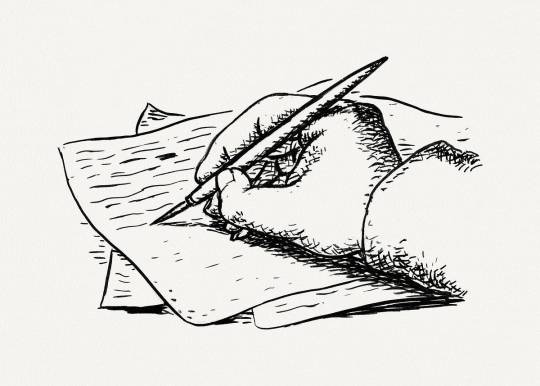
If you’ve ever been on the hunt for writing advice, you've definitely seen the phrase “Show, Don’t Tell.”
Writeblr coughs up these three words on the daily; it’s often considered the “Golden Rule” of writing. However, many posts don't provide an in-depth explanation about what this "Golden Rule" means (This is most likely to save time, and under the assumption that viewers are already informed).
More dangerously, some posts fail to explain that “Show, Don’t Tell” occasionally doesn’t apply in certain contexts, toeing a dangerous line by issuing a blanket statement to every writing situation.
The thing to take away from this is: “Show, Don’t Tell” is an essential tool for more immersive writing, but don't feel like a bad writer if you can’t make it work in every scenario (or if you can’t get the hang of it!)
1. What Does "Show, Don't Tell" Even Mean?

“Show, Don’t Tell” is a writing technique in which the narrative or a character’s feelings are related through sensory details rather than exposition. Instead of telling the reader what is happening, the reader infers what is happening due to the clues they’ve been shown.
EXAMPLE 1:
Telling: The room was very cold.
Showing: She shivered as she stepped into the room, her breath steaming in the air.
EXAMPLE 2:
Telling: He was furious.
Showing: He grabbed the nearest book and hurled it against the wall, his teeth bared and his eyes blazing.
EXAMPLE 3 ("SHOW, DON'T TELL" DOESN'T HAVE TO MEAN "WRITE A LOT MORE")
Telling: The room hadn't been lived in for a very long time.
Showing: She shoved the door open with a spray of dust.
Although the “showing” sentences don’t explicitly state how the characters felt, you as the reader use context clues to form an interpretation; it provides information in an indirect way, rather than a direct one.
Because of this, “Show, Don’t Tell” is an incredibly immersive way to write; readers formulate conclusions alongside the characters, as if they were experiencing the story for themselves instead of spectating.
As you have probably guessed, “showing” can require a lot more words (as well as patience and effort). It’s a skill that has to be practiced and improved, so don’t feel discouraged if you have trouble getting it on the first try!
2. How Do I Use “Show, Don’t Tell” ?
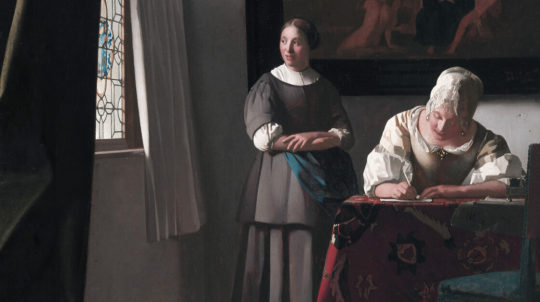
There are no foolproof parameters about where you “show” and not “tell" or vice versa; it’s more of a writing habit that you develop rather than something that you selectively decide to employ.
In actuality, most stories are a blend of both showing and telling, and more experienced writers instinctively switch between one and another to cater to their narrative needs. You need to find a good balance of both in order to create a narrative that is both immersive and engaging.
i. Help When Your Writing Feels Bare-Bones/Soulless/Boring
Your writing is just not what you’ve pictured in your head, no matter how much you do it over. Conversations are stilted. The characters are flat. The sentences don’t flow as well as they do in the books you've read. What’s missing?
It’s possibly because you’ve been “telling” your audience everything and not “showing”! If a reader's mind is not exercised (i.e. they're being "spoon-fed" all of the details), your writing may feel boring or uninspired!
Instead of saying that a room was old and dingy, maybe describe the peeling wallpaper. The cobwebs in the corners. The smell of dust and old mothballs. Write down what you see in your mind's eye, and allow your audience to formulate their own interpretations from that. (Scroll for a more in-depth explanation on HOW to develop this skill!)
ii. Add More Depth and Emotion to Your Scenes
Because "Show, Don't Tell" is a more immersive way of writing, a reader is going to feel the narrative beats of your story a lot more deeply when this rule is utilized.
Describing how a character has fallen to their knees sobbing and tearing our their hair is going to strike a reader's heart more than saying: "They were devastated."
Describing blood trickling through a character's fingers and staining their clothes will seem more dire than saying: "They were gravely wounded."
iii. Understand that Sometimes Telling Can Fit Your Story Better
Telling can be a great way to show your characters' personalities, especially when it comes to first-person or narrator-driven stories. Below, I've listed a few examples; however, this list isn't exclusive or comprehensive!
Initial Impressions and Character Opinions
If a character describes someone's outfit as "gaudy" or a room as "absolutely disgusting," it can pack more of a punch about their initial impression, rather than describing the way that they react (and can save you some words!).
In addition, it can provide some interesting juxtaposition (i.e. when a character describes a dog as "hideous" despite telling their friend it looks cute).
2. Tone and Reader Opinions
Piggybacking off of the first point, you can "tell, not show" when you want to be certain about how a reader is supposed to feel about something. "Showing" revolves around readers drawing their own conclusions, so if you want to make sure that every reader draws the same conclusion, "telling" can be more useful!
For example, if you describe a character's outfit as being a turquoise jacket with zebra-patterned pants, some readers may be like "Ok yeah a 2010 Justice-core girlie is slaying!" But if you want the outfit to come across as badly arranged, using a "telling" word like "ridiculous" or "gaudy" can help set the stage.
3. Pacing
"Show, don't tell" can often take more words; after all, describing a character's reaction is more complicated than stating how they're feeling. If your story calls for readers to be focused more on the action than the details, such as a fight or chase scene, sometimes "telling" can serve you better than "showing."
A lot of writers have dedicated themselves to the rule "tell action, show emotion," but don't feel like you have to restrict yourself to one or the other.
iv. ABOVE ALL ELSE: Getting Words on the Page is More Important!
If you’re stuck on a section of your story and just can’t find it in yourself to write poetic, flowing prose, getting words on the paper is more important than writing something that’s “good.” If you want to be able to come back and fix it later, put your writing in brackets that you can Ctrl + F later.
Keeping your momentum is the hardest part of writing. Don't sacrifice your inspiration in favor of following rules!
3. How Can I Get Better at “Show, Don’t Tell”?
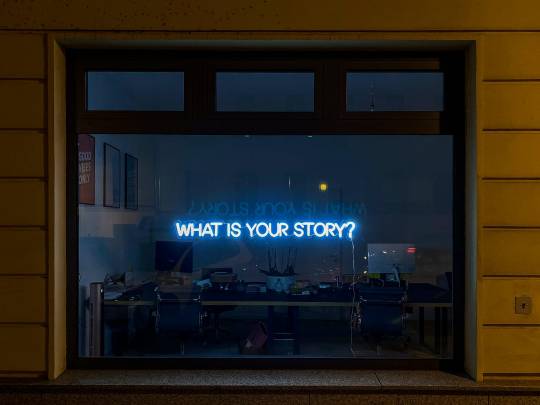
i. Use the Five Senses, and Immerse Yourself!
Imagine you’re the protagonist, standing in the scene that you have just created. Think of the setting. What are things about the space that you’d notice, if you were the one in your character’s shoes?
Smell? Hear? See? Touch? Taste?
Sight and sound are the senses that writers most often use, but don’t discount the importance of smell and taste! Smell is the most evocative sense, triggering memories and emotions the moment someone walks into the room and has registered what is going on inside—don’t take it for granted. And even if your character isn’t eating, there are some things that can be “tasted” in the air.
EXAMPLE:
TELLING: She walked into the room and felt disgusted. It smelled, and it was dirty and slightly creepy. She wished she could leave.
SHOWING: She shuffled into the room, wrinkling her nose as she stepped over a suspicious stain on the carpet. The blankets on the bed were moth-bitten and yellowed, and the flowery wallpaper had peeled in places to reveal a layer of blood-red paint beneath…like torn cuticles. The stench of cigarettes and mildew permeated the air.
“How long are we staying here again?” she asked, flinching as the door squealed shut.
The “showing” excerpt gives more of an idea about how the room looks, and how the protagonist perceives it. However, something briefer may be more suited for writers who are not looking to break the momentum in their story. (I.e. if the character was CHASED into this room and doesn’t have time to take in the details.)
ii. Study Movies and TV Shows: Think like a Storyteller, Not Just a Writer
Movies and TV shows quite literally HAVE TO "show, and not tell." This is because there is often no inner monologue or narrator telling the viewers what's happening. As a filmmaker, you need to use your limited time wisely, and make sure that the audience is engaged.
Think about how boring it would be if a movie consisted solely of a character monologuing about what they think and feel, rather than having the actor ACT what they feel.
(Tangent, but there’s also been controversy that this exposition/“telling” mindset in current screenwriting marks a downfall of media literacy. Examples include the new Percy Jackson and Avatar: The Last Airbender remakes that have been criticized for info-dumping dialogue instead of “showing.”)
If you find it easy to envision things in your head, imagine how your scene would look in a movie. What is the lighting like? What are the subtle expressions flitting across the actors' faces, letting you know just how they're feeling? Is there any droning background noise that sets the tone-- like traffic outside, rain, or an air conditioner?
How do the actors convey things that can't be experienced through a screen, like smell and taste?
Write exactly what you see in your mind's eye, instead of explaining it with a degree of separation to your readers.
iii. Listen to Music
I find that because music evokes emotion, it helps you write with more passion—feelings instead of facts! It’s also slightly distracting, so if you’re writing while caught up in the music, it might free you from the rigid boundaries you’ve put in place for yourself.
Here’s a link to my master list of instrumental writing playlists!
iv. Practice, Practice, Practice! And Take Inspiration from Others!
“Show Don’t Tell” is the core of an immersive scene, and requires tons of writing skills cultivated through repeated exposure. Like I said before, more experienced writers instinctively switch between showing and telling as they write— but it’s a muscle that needs to be constantly exercised!
If I haven’t written in a while and need to get back into the flow of things, I take a look at a writing prompt, and try cultivating a scene that is as immersive as possible! Working on your “Show, Don’t Tell” skills by practicing writing short, fun one-shots can be much less restrictive than a lengthier work.
In addition, get some inspiration and study from reading the works of others, whether it be a fanfiction or published novel!
If you need some extra help, feel free to check out my Master List of Writing Tips and Advice, which features links to all of my best posts, each of them categorized !
Hope this helped, and happy writing!
2K notes
·
View notes
